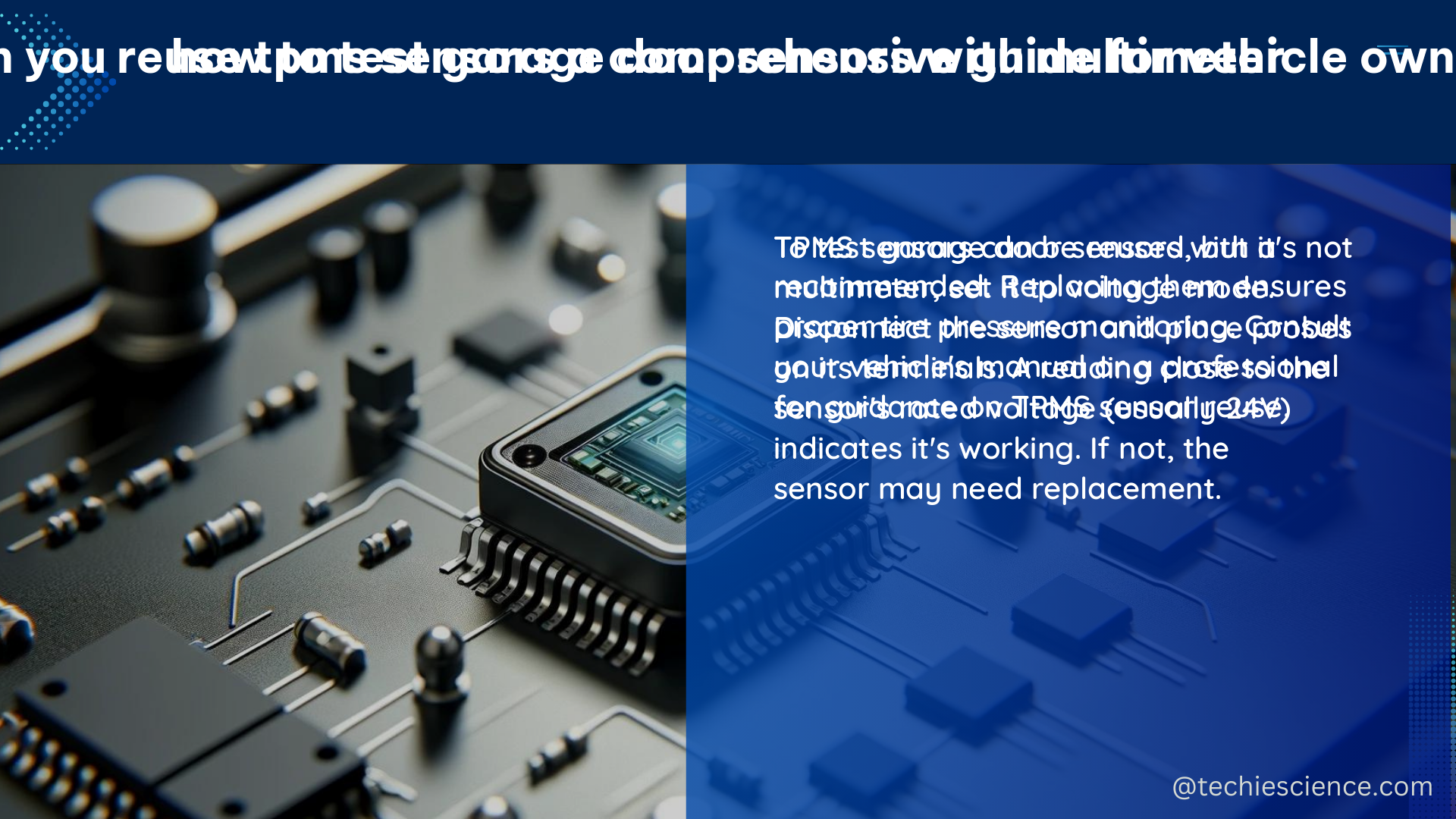TPMS sensors, or Tire Pressure Monitoring Systems, are crucial safety features in modern vehicles. They monitor tire pressure and alert drivers when it falls below a certain threshold. But what happens when it’s time to change tires or wheels? Can you reuse TPMS sensors, or do you need to buy new ones every time? Let’s dive into the details.
Reusing TPMS sensors: Yes, but with some caveats
The consensus among experts and vehicle owners is that you can reuse TPMS sensors, but there are some conditions. Here are the key takeaways:
- Sensor compatibility:
- TPMS sensors come in different frequencies, such as 315 MHz and 433 MHz, and they must match the frequency of your vehicle’s TPMS system.
- Ensure that the sensors you’re planning to reuse are compatible with your vehicle’s make, model, and year. This is especially important if you’re considering using sensors from a different vehicle.
-
Check the sensor’s part number and ensure it’s the correct one for your vehicle. Using the wrong sensor can cause compatibility issues and lead to TPMS system malfunctions.
-
Programming:
- TPMS sensors need to be programmed to work with a specific vehicle’s TPMS system.
- This process can be done at a dealership or by a professional using specialized tools, such as a TPMS programming tool or a diagnostic scanner.
-
The programming process typically involves activating the sensors, pairing them with the vehicle’s TPMS system, and setting the correct tire pressure thresholds.
-
Condition of sensors:
- Inspect the sensors for any damage or wear before reusing them.
- Look for signs of corrosion, cracks, or other physical damage that might affect the sensor’s performance.
-
If the sensors are in poor condition, it’s best to replace them with new ones to ensure reliable TPMS operation.
-
Rebuild kits:
- Some TPMS sensors can be rebuilt using kits, which can be a cost-effective alternative to buying new sensors.
- These kits typically include a new battery, seals, and other components necessary to refurbish the sensor.
-
Rebuilding the sensors can extend their lifespan and save you money compared to purchasing new ones.
-
Hazardous waste disposal:
- TPMS sensors contain lithium batteries, which are classified as hazardous waste.
- It’s essential to dispose of them properly in accordance with local, state, and federal regulations.
- Many auto parts stores and dealerships offer TPMS sensor recycling programs to ensure proper disposal.
Measurable data on reusing TPMS sensors

Here are some quantifiable data points to consider when deciding whether to reuse TPMS sensors:
| Metric | Value |
|---|---|
| Cost of a new TPMS sensor | $50 to $100 |
| Cost of a TPMS sensor rebuild kit | Around $20 |
| Typical TPMS sensor lifespan | 5 to 6 years |
| Tire pressure accuracy impact | Minimal, as long as sensors are in good condition and properly programmed |
| Installation time savings | Significant, as you won’t need to install and program new sensors |
DIY guide to reusing TPMS sensors
If you’re considering reusing TPMS sensors, here’s a step-by-step guide to help you through the process:
- Inspect the sensors:
- Carefully examine the sensors for any signs of damage, such as cracks, corrosion, or physical deformation.
- Ensure that the sensor’s housing is intact and the battery compartment is sealed properly.
-
Check the sensor’s valve stem for any wear or damage that could affect its ability to maintain a proper seal.
-
Remove the sensors:
- Carefully remove the sensors from the tires or wheels, taking care not to damage the tire or the sensor itself.
-
Use the appropriate tools, such as a TPMS sensor removal tool, to avoid damaging the sensor during the removal process.
-
Program the sensors:
- Take the sensors to a dealership or use a professional TPMS programming tool to program them to your vehicle.
- The programming process typically involves activating the sensors, pairing them with the vehicle’s TPMS system, and setting the correct tire pressure thresholds.
-
Ensure that the sensors are properly programmed and recognized by the TPMS system.
-
Install the sensors:
- Once the sensors are programmed, install them on the tires or wheels.
- Make sure the sensors are securely attached and properly aligned to ensure accurate tire pressure readings.
-
Refer to your vehicle’s service manual or consult a professional for the correct installation procedures.
-
Test the system:
- After installation, test the TPMS system to ensure it’s working correctly.
- Most vehicles have a built-in TPMS test function that you can use to check the system’s operation.
- Verify that the TPMS warning light is functioning properly and that the system is accurately monitoring tire pressure.
By following these steps, you can successfully reuse your TPMS sensors and save money while maintaining the safety and reliability of your vehicle’s tire pressure monitoring system.
References
- Tacoma World – New or Reuse TPMS Sensors?
- Quest RMG – Recycling TPMS
- Pacifica Forums – Reuse TPMS
- Tundras.com – Reusing Stock TPMS on New Wheels
- Club Lexus – Can a Used TPMS be Re-used on Another Vehicle?

The lambdageeks.com Core SME Team is a group of experienced subject matter experts from diverse scientific and technical fields including Physics, Chemistry, Technology,Electronics & Electrical Engineering, Automotive, Mechanical Engineering. Our team collaborates to create high-quality, well-researched articles on a wide range of science and technology topics for the lambdageeks.com website.
All Our Senior SME are having more than 7 Years of experience in the respective fields . They are either Working Industry Professionals or assocaited With different Universities. Refer Our Authors Page to get to know About our Core SMEs.